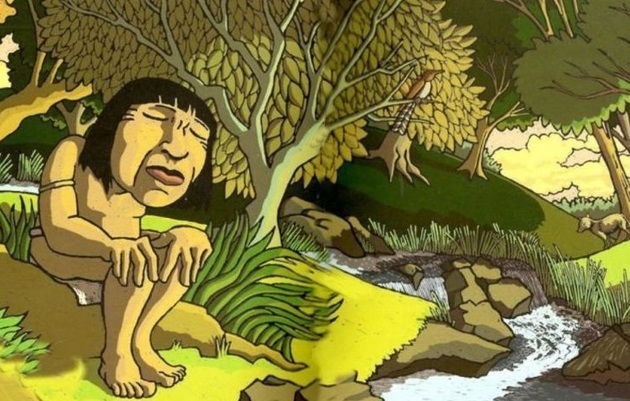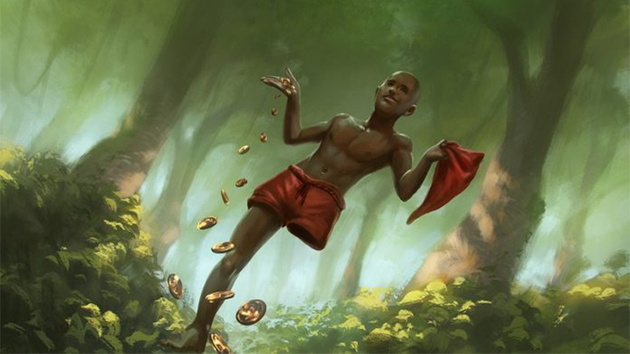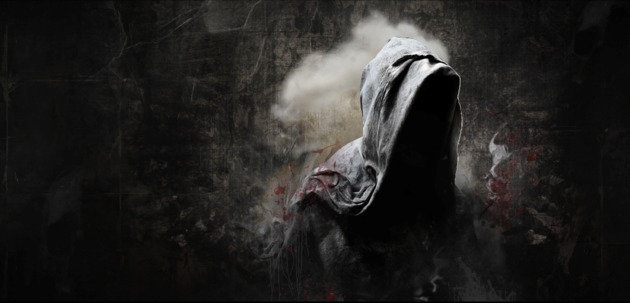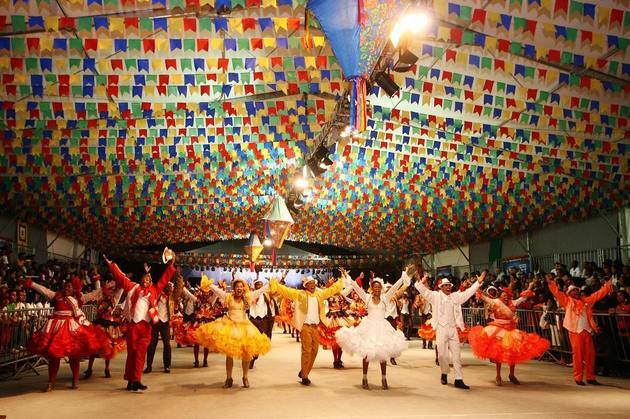At region legendssouth they mix indigenous, African and European traditions and are used to explain the customs of human beings and the behavior of animals.
They also made it possible to create stories of fantastic beings and otherworldly creatures, sometimes malicious!
Therefore, we have prepared a selection of eight legends so that you can get to know even more the rich Brazilian folklore.
1. Itaguaçu Beach Witches Legends

The island of Florianópolis is known as the Island of Magic, as it is said that many supernatural beings inhabit those beaches and are responsible for various strange phenomena.
Itaguaçu beach, for example, has very curious rock formations.
The natives say that one day, the witches who lived there decided to give a party and invited several friends, such as Mule-without-head, Curupira, Saci, Werewolf and many others. They just didn't call the devil, because he smelled bad!
However, the devil found out about the celebration and decided to show up anyway. When he arrived, the witches were surprised and didn't know what to do. Furious, the devil turned the witches into stones and they are still there today, waiting for the rage of the bad thing to pass and turn them into witches again.
2. legend of cuca

Cuca is a witch with an alligator body and yellow hair. Her voice is horrible and her scream can be heard from miles away.
She lives in a cave preparing spells and watching the forest through her magic mirror where she can see everything that is happening.
Cuca sleeps one night every seven years and that is why it is always on the lookout for children who do not obey their parents and those who do not sleep early. They say she goes out at night and goes around the houses to pick up boys and girls who don't sleep on time.
Cuca became a well-known character thanks to the writer Monteiro Lobato, who included her in his work "O Sítio do Pica-pau Amarelo".
3. Legend of Yerba Mate

There was an old Indian warrior in the forest who lived with his daughter Yari in a cave. Without the strength to fight, the Indian hosted travelers who passed by.
One day, a hunter arrived asking for rest and he was received with all honors. After dinner, the daughter began to sing to the young man who fell asleep immediately. The next day, the hunter revealed his identity and told them that he was an envoy of the god Tupã.
In gratitude for the hospitality, he showed the old man an herb from which he could make tea to regain his strength. He also turned the Indian girl into the goddess who would guard those plants and teach men to cultivate them and live in peace.
Therefore, yerba mate is a symbol of brotherhood and peaceful coexistence among human beings and is always shared among all.
4. Legend of the Blue Jaw

The blue jay is a bird that lives in araucaria (or pine) forests and has an interesting habit. Providently, she always buries some seeds of the fruit. However, as he ends up forgetting the place where he planted them, many germinate and transform into beautiful trees.
A long time ago, when God created the world, he asked the birds to help spread the seeds of the araucaria. None of them wanted to, as they were busy contemplating its colorful feathers or composing melodies with its singing.
Only the shrill-shrieking black crow volunteered and proceeded to plant the tree's seeds. To thank her for her gesture, God covered her with a blue mantle the color of the sky, making her distinct from all birds of her species. The crowned Indians imitated his singing and the enslaved blacks claimed that no shot from a rifle reached the blue jay.
Currently, the blue jay is considered the symbol bird of the state of Paraná and continues its mission to plant the araucaria in the mountains of the region.
5. Legend of João-de-Barro

In an indigenous village in southern Brazil, young Jaebé fell in love with the most beautiful girl in the tribe and asked her to marry him. The girl's father said that he would only consent if he could prove his love for his daughter.
Then Jaebé declared that he would fast for nine days. Accepting the challenge, the natives wrapped him in a thick tapir hide, where he could not go out to eat or drink.
At the end of the nine days, everyone went to the place where Jaebé was and unrolled the hide. Many thought he was dead, but the Indian jumped up and began to sing to his beloved. While singing a beautiful love song, his body filled with feathers and he turned into a bird.
The rays of the moon touched his beloved and she too became a bird. They were so happy that they decided to build a beautiful house. Unlike other birds, João-de-Barro and its companion make a closed nest to raise their young.
6. Legend of Negrinho do Pastoreio

It is said that in the time of slavery there was a cruel lord who mistreated the enslaved blacks at the slightest misconduct. Once, one of his slaves, an orphan boy, let his master's favorite horse slip away. He was furious, had him whipped, and ordered him to be placed on top of an anthill.
The boy spent the night calling for Nossa Senhora da Conceição, his godmother, to free him from those pains. Meanwhile, the farmer couldn't sleep, got up and was intrigued when he saw a strong light in the yard.
Quickly, he went to the place and what was his surprise to find the boy scaring the last ants from his body. Beside him was Our Lady and on the other side neighed the horse that had been lost. The boy looked at his former master, mounted the bay horse, smiled at the Virgin, and rode away.
They say you regretted your wickedness. Even today, it is possible to hear Negrinho do Pastoreio taking care of animals that move away from the herd and helping people to find lost objects.
7. Legend of Saci-pererê

Saci-pererê is a black boy, who has only one leg, smokes a pipe and wears a magical cap that gives him various powers. One of them is to move through a whirlpool, which makes it agile by preventing capture.
Saci-pererê loves to play pranks, such as hiding objects, braiding the manes and tails of horses, removing people's blankets on cold days, undoing drawers and much more. In the forest, however, he is a guardian, as he uses his whistles to frighten hunters and even scatters shotgun bullets.
He is only injured when he loses his red cap in the woods, as he cannot move and has to beg for help. Saci also doesn't like it when his smoking ends and, therefore, he ends up promising a lot of things to those who give him some tobacco. Obviously, he doesn't deliver on his promises after he gets it.
Due to his personality, Saci became one of the most popular characters in Brazilian folklore and in his honor the Saci's Day, on October 31st.
8. Legend of Aho Ahó

During the time of the Jesuit missions in the territory of the Guarani Indians, the priests of the Society of Jesus took advantage of existing legends to frighten new converts.
One of the stories that circulated among the reductions was that of the Ahó Ahó. This was a creature similar to a sheep, but much larger, robust and had terrible teeth. They only lived in groups and communicated with each other emitting shouts that produced the sound "Aó Aó" and hence its name.
It is said that the Ahó Ahó chased people who walked unnoticed through the forests. The only way to escape was by climbing a palm tree, the leaves of which are used on Palm Sunday. They also say that Ahó Ahó welcomed the children who were kidnapped by another character in the forest, Jaci Jaterê. This one watched over those boys and girls who didn't take a siesta.
The legend of Ahó Ahó is also part of the folklore of Argentina and Paraguay.
9. legend of the brawler

The Bradador is a wandering spirit that lives scaring the unwary who travel alone.
It is said that a man died, in the city of Atuba (PR), was buried without paying for all the sins he had committed in life. So the earth refused to give him rest and gave him back. From that day on, every Friday, after midnight, a half-ghost creature, half-man started wandering through the fields, uttering terrible screams that frighten even the bravest.
Because of the horrifying sound, the villages started calling him Bradador and avoiding the lonely paths. There are few who have lived to tell what the appearance of this soul that remains between two worlds looks like.
The spell will only end when the Bradador meets a girl named Maria seven times and thus has his sins forgiven. The problem is to find someone who has the courage to face the frightening cries of this wandering creature.
Folklore Quiz
Don't stop here! Learn more about the rich folklore of our country and check out the texts:
- Brazilian folklore: legends, games, music
- Popular Culture: what it is, characteristics and in Brazil
- Folk Songs: Brazilian Folk Songs
- Legends of the North Region that you need to know
- Northeast Region Legends You'll Love
- Legends of the Southeast that you can't miss
- Fantastic Legends of the Midwest Region
- Amazing African Legends
- What is it, what is it: riddles with answers
- Myths and legends from Brazil and the world



